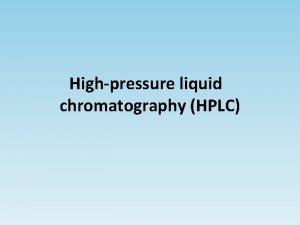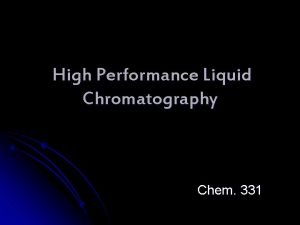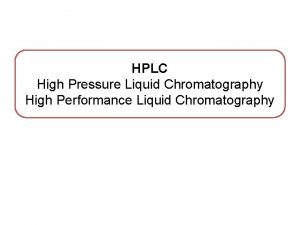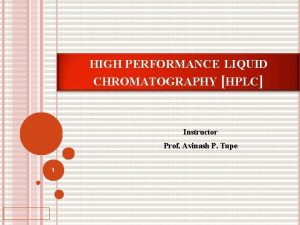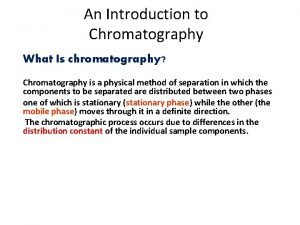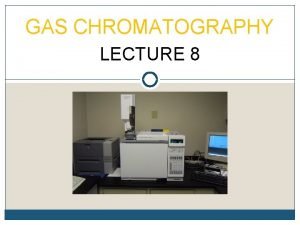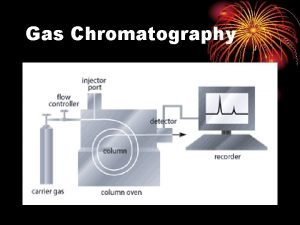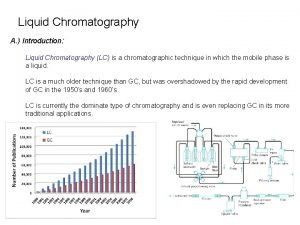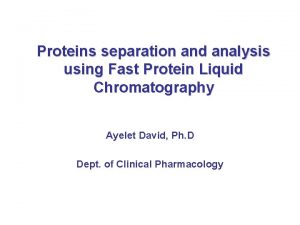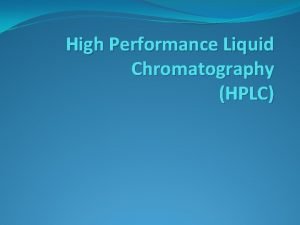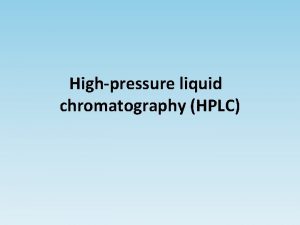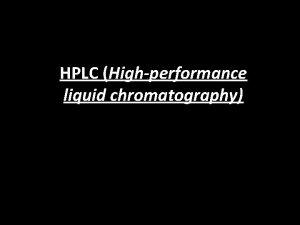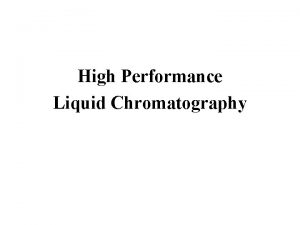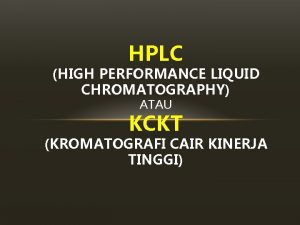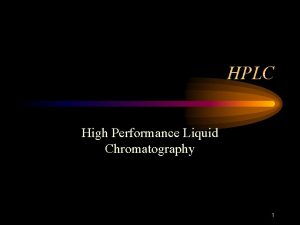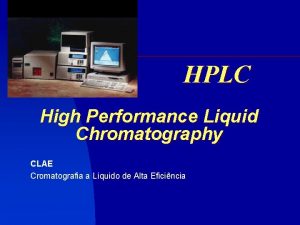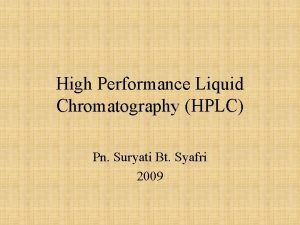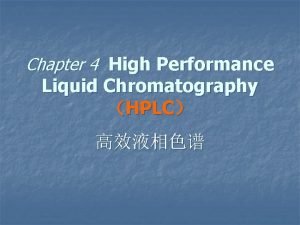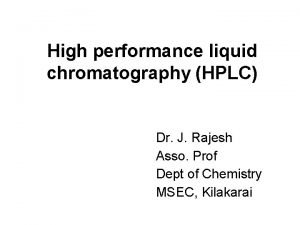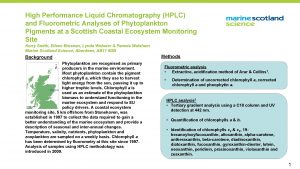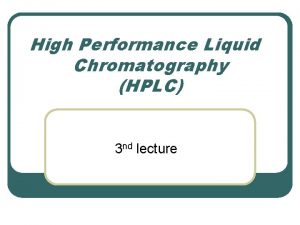High Performance Liquid Chromatography HPLC Alondra Ponce What
















- Slides: 16

High Performance Liquid Chromatography (HPLC) Alondra Ponce

What the heck is this? - Technique used to separate, identify, and quantify each component in a mixture through adsorption - The binding of molecules to a surface - Every compound interacts with other chemical species in a characteristic manner - Basically a highly improved version of column chromatography - Instead of a solvent being allowed to drip through a column under gravity, it’s forced through under high pressures of up to 400 atm, which makes it much faster - Stationary phase: a solid, or a liquid supported on a solid

Absorption Adsorption



Preparation & Analyzation A reservoir holds the solvent [called the mobile phase, because it moves]. A high-pressure pump [solvent delivery system or solvent manager] is used to generate and meter a specified flow rate of mobile phase, typically milliliters per minute. An injector [sample manager or autosampler] is able to inject the sample into the continuously flowing mobile phase stream that carries the sample into the HPLC column. - column contains the chromatographic packing material needed to effect the separation. This packing material is called the stationary phase because it’s held in place by the column hardware. A detector is needed to see the separated compound bands as they elute from the HPLC column [most compounds have no color, so we can’t see them with our eyes]. The mobile phase exits the detector and can be sent to waste, or collected. When the mobile phase contains a separated compound band, HPLC provides the ability to collect this fraction of the eluate (or mobile phase) containing that purified compound for further study. This is called preparative chromatography [discussed in the section on HPLC Scale].

Continued Retention time: time taken for a particular compound to travel through the column to the detector This time is measured from the time at which the sample is injected to the point at which the display shows a maximum peak height for that compound. Different compounds have different retention times. For a particular compound, the retention time will vary depending on: the pressure used (because that affects the flow rate of the solvent) the stationary phase (not only what it’s made of, but also particle size) the exact composition of the solvent the temperature of the column





Applications Used for the separation of almost all other compound varieties. Separates: - aromatic hydrocarbons - amines, sugars, lipids, and even - pharmaceutically compounds such as vitamins - amino acids, peptides, and proteins (protein shake) - molecules of biological origin (dna sequencing)

Examples

Practice Problems Which can be used as a mobile phase in HPLC applications? a. Any compound with solubility in liquid b. Any compound with limited solubility in liquid c. Any compound with non-solubility in liquid d. All of the above

Continued

References 1. http: //www. chemguide. co. uk/analysis/chromatography/thinlayer. html#top 2. http: //ks. water. usgs. gov/pubs/reports/wrir. 99 -4018 b. kah. html#HDR 5 3. https: //www. beckmancoulter. com/wsrportal/wsr/index. htm 4. http: //hiq. lindegas. com/en/analytical_methods/liquid_chromatography/high_performance_liq uid_chromatography. html
 High performance liquid chromatography hplc machine
High performance liquid chromatography hplc machine Applications of high performance liquid chromatography
Applications of high performance liquid chromatography High performance liquid chromatography introduction
High performance liquid chromatography introduction Donkey nose spongebob
Donkey nose spongebob Alondra ramirez
Alondra ramirez Hplc
Hplc Hplc principle
Hplc principle Mobile phase in adsorption chromatography
Mobile phase in adsorption chromatography Principle of gc
Principle of gc Gas liquid chromatography
Gas liquid chromatography Chromatography introduction
Chromatography introduction Void volume
Void volume Stressed oil volume theory is applicable when
Stressed oil volume theory is applicable when Lever arm rule liquid liquid extraction
Lever arm rule liquid liquid extraction Manejo de emergencias ponce
Manejo de emergencias ponce Ponce de leon nationality
Ponce de leon nationality What was juan ponce de leon impact
What was juan ponce de leon impact

